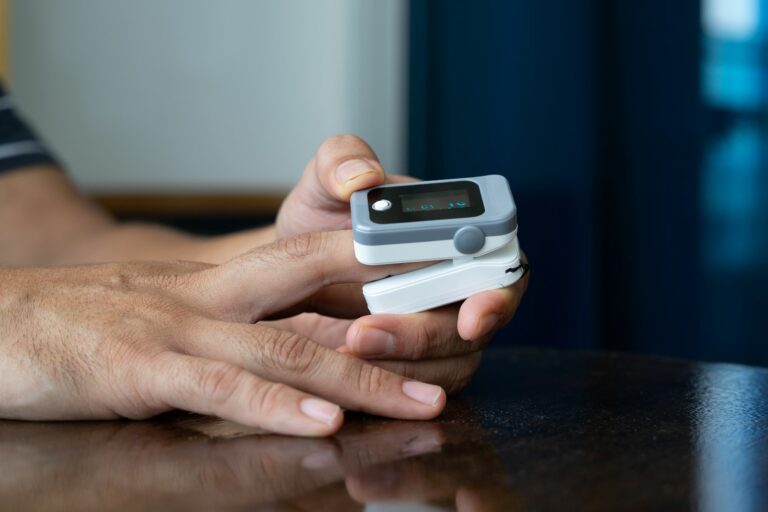Hospital readmissions among chronic patients pose a significant challenge for healthcare systems worldwide, leading to increased healthcare costs and compromised patient outcomes. In response to this pressing issue, DrKumo has emerged as a pioneer in remote patient monitoring (RPM) technology, offering innovative solutions to mitigate hospital readmissions and improve the quality of care for chronic patients.
By continuously monitoring vital signs, symptoms, and adherence to treatment plans, DrKumo’s Patient Monitoring System aims to provide early detection of health complications, personalized care interventions, and enhanced patient engagement.
This article explores the profound influence of DrKumo’s remote patient monitoring technology in reducing hospital readmissions among chronic patients, examining its impact on healthcare delivery, patient outcomes, and the future of healthcare innovation.
Understanding Chronic Diseases and Hospital Readmissions
Globally, chronic diseases are a leading cause of mortality, placing significant strain on healthcare systems. Hospital readmissions among chronic patients are often due to inadequate management and follow-up care. These frequent readmissions exacerbate patient health risks and lead to increased healthcare costs and resource allocation issues.
Characteristics of chronic patients
Chronic patients have long-term medical conditions that require ongoing management and care. They often face multiple health challenges and are more prone to hospital readmissions due to the complexity of their conditions. Understanding the unique needs and challenges of chronic patients is essential for developing targeted interventions to prevent readmissions and improve their quality of life.
Challenges in managing chronic conditions
Managing chronic conditions can be challenging due to the need for continuous monitoring, adherence to treatment plans, and coordination of care between healthcare providers. Additionally, factors such as socioeconomic status, access to healthcare resources, and health literacy can impact a patient’s ability to manage their condition effectively. Addressing these challenges requires a holistic approach that considers the social, economic, and cultural factors influencing patient health and well-being.
Link between chronic illness and hospital readmissions
There is a strong correlation between chronic illness and hospital readmissions. Chronic patients are more likely to experience exacerbations of their conditions, leading to recurrent hospital visits. Factors such as medication non-adherence, lifestyle choices, and comorbidities can contribute to the cycle of hospital readmissions among chronic patients. By implementing proactive management strategies and providing comprehensive support, healthcare providers can break this cycle and improve outcomes for chronic patients.
Introduction to DrKumo
Background of DrKumo
DrKumo is a healthcare technology company founded with the mission of improving patient outcomes and reducing healthcare costs through innovative solutions. With a focus on leveraging technology to empower patients and enhance care delivery, DrKumo has emerged as a leader in the field of remote patient monitoring.
Mission and vision
The mission of DrKumo is to empower patients and healthcare providers through advanced remote monitoring technology, ultimately leading to better health outcomes and enhanced quality of life. By bridging the gap between patients and providers, DrKumo aims to revolutionize the delivery of healthcare services, making them more accessible, efficient, and patient-centered.
Evolution of patient monitoring systems
DrKumo’s Patient Monitoring System represents the evolution of traditional healthcare monitoring methods, offering real-time data collection and analysis for improved patient care. With continuous advancements in technology and a growing emphasis on preventive care, DrKumo remains at the forefront of innovation, driving positive change in the healthcare industry.
DrKumo’s Remote Patient Monitoring Technology
Overview of RPM
Remote Patient Monitoring (RPM) involves the use of technology to monitor patients’ health remotely, outside of traditional clinical settings. DrKumo’s RPM solution utilizes a combination of wearable devices, mobile applications, and cloud-based platforms to collect and analyze patient data in real-time.
Features and components of DrKumo’s system
DrKumo’s system includes wearable devices equipped with sensors to track vital signs, such as heart rate, blood pressure, and blood glucose levels. These devices seamlessly integrate with the DrKumo mobile app, allowing patients to input additional health data and receive personalized feedback from healthcare providers. The platform also provides secure access for clinicians to monitor patients’ progress and intervene as needed.
Advantages over traditional monitoring methods
DrKumo’s system offers several advantages over traditional monitoring methods, including real-time data collection, early detection of health issues, and personalized care plans tailored to each patient’s needs. By leveraging technology to monitor patients remotely, DrKumo enables proactive interventions, reduces the need for in-person visits, and empowers patients to take control of their health.
Role of Patient Monitoring in Mitigating Hospital Readmissions
How RPM addresses the needs of chronic patients
RPM addresses the needs of chronic patients by providing continuous monitoring of vital signs, medication adherence, and symptom management, leading to early intervention and reduced hospital readmissions. By closely monitoring patients’ health status, DrKumo’s system can detect potential complications before they escalate, allowing for timely interventions and preventing unnecessary hospital visits.
Real-time monitoring and early detection of complications
Real-time monitoring allows healthcare providers to detect changes in patients’ health status promptly, enabling timely intervention and preventing the escalation of health issues. Through continuous data monitoring and analysis, DrKumo’s system identifies trends and patterns that may indicate deteriorating health, allowing for proactive interventions to prevent hospital readmissions.
Customized care plans and patient engagement
DrKumo’s system facilitates the creation of customized care plans based on individual patient data and preferences, promoting patient engagement and self-management of their conditions. By involving patients in their care decisions and providing personalized feedback and recommendations, DrKumo empowers patients to take an active role in managing their health, ultimately reducing the likelihood of hospital readmissions.
Role of Patient Monitoring in Mitigating Hospital Readmissions
How RPM addresses the needs of chronic patients
RPM addresses the needs of chronic patients by providing continuous monitoring of vital signs, medication adherence, and symptom management, leading to early intervention and reduced hospital readmissions. By closely monitoring patients’ health status, DrKumo’s system can detect potential complications before they escalate, allowing for timely interventions and preventing unnecessary hospital visits.
Real-time monitoring and early detection of complications
Real-time monitoring allows healthcare providers to detect changes in patients’ health status promptly, enabling timely intervention and preventing the escalation of health issues. Through continuous data monitoring and analysis, DrKumo’s system identifies trends and patterns that may indicate deteriorating health, allowing for proactive interventions to prevent hospital readmissions.
Customized care plans and patient engagement
DrKumo’s system facilitates the creation of customized care plans based on individual patient data and preferences, promoting patient engagement and self-management of their conditions. By involving patients in their care decisions and providing personalized feedback and recommendations, DrKumo empowers patients to take an active role in managing their health, ultimately reducing the likelihood of hospital readmissions.
Cost-Benefit Analysis
Economic impact of reduced readmissions
The reduction in hospital readmissions facilitated by DrKumo’s system leads to significant cost savings for healthcare systems, including reduced hospitalization costs and improved resource allocation. By preventing avoidable readmissions, DrKumo’s system helps healthcare providers optimize their use of resources and allocate them more efficiently to areas with the greatest need.
Comparative analysis with traditional healthcare costs
Comparative analysis demonstrates that the long-term benefits of implementing DrKumo’s system outweigh the initial investment, resulting in a positive return on investment for healthcare providers. While the upfront costs of implementing remote monitoring technology may be significant, the potential savings from reduced hospital admissions, improved patient outcomes, and increased efficiency justify the investment over time.
Long-term savings and Return on Investment (ROI)
Over time, the cost savings associated with reduced hospital readmissions and improved patient outcomes far exceed the initial investment in DrKumo’s system, making it a financially viable solution for healthcare organizations. By reducing the need for costly hospital admissions and emergency department visits, DrKumo’s system helps healthcare providers achieve long-term savings and improve the overall sustainability of their operations.
Ethical Considerations and Patient Privacy
Ensuring data confidentiality and consent
Maintaining patient privacy and obtaining informed consent are essential ethical considerations in the implementation of DrKumo’s system, ensuring that patient data is protected and used responsibly. Healthcare providers must adhere to strict privacy standards and obtain explicit consent from patients before collecting and using their health information.
Ethical use of patient monitoring data
Healthcare providers must use patient monitoring data ethically, avoiding any misuse or unauthorized access that could compromise patient privacy or autonomy. It is essential to prioritize patient well-being and ensure that data collected through remote monitoring is used solely for the purpose of improving patient care and outcomes.
Balancing technology advancements with patient rights
Striking a balance between leveraging technological advancements to improve patient care and respecting patient rights is crucial for the ethical implementation of DrKumo’s system. Healthcare providers must prioritize patient autonomy, respect their preferences and values, and ensure that the use of remote monitoring technology enhances, rather than undermines, patient-centered care.
Implementation Strategies for Healthcare Providers
Steps to integrate DrKumo’s System into existing practices
Healthcare providers should develop comprehensive implementation plans that include staff training, workflow integration, and patient education to successfully integrate DrKumo’s system into existing practices. By involving key stakeholders from the outset and addressing potential challenges proactively, healthcare providers can maximize the effectiveness of the implementation process.
Training and education for healthcare professionals
Training healthcare professionals on how to use DrKumo’s system effectively is essential for maximizing its benefits and ensuring seamless integration into clinical workflows. Healthcare providers should offer ongoing training and support to empower staff with the knowledge and skills needed to leverage remote monitoring technology effectively.
Overcoming organizational resistance and skepticism
Addressing organizational resistance and skepticism through stakeholder engagement, pilot programs, and evidence-based research can facilitate the successful adoption of DrKumo’s system. By demonstrating the tangible benefits of remote monitoring and addressing concerns about workflow disruption, healthcare providers can gain buy-in from staff and stakeholders and foster a culture of innovation and collaboration.
Patient Empowerment and Education
Engaging patients in self-monitoring and management
Empowering patients to take an active role in monitoring and managing their health using DrKumo’s system promotes self-efficacy and improves health outcomes. Healthcare providers should provide patients with the necessary tools, resources, and support to enable them to participate actively in their care and make informed decisions about their health.
Promoting health literacy and awareness
Educating patients about their conditions, treatment options, and the role of remote monitoring technology fosters health literacy and promotes informed decision-making. Healthcare providers should leverage various communication channels, such as educational materials, workshops, and online resources, to empower patients with the knowledge they need to manage their health effectively.
Tools and resources for patient education
Providing patients with educational materials, tutorials, and support resources related to DrKumo’s system enhances their understanding and encourages active participation in their care. Healthcare providers should offer personalized support and guidance to help patients navigate the use of remote monitoring technology and address any questions or concerns they may have.
Collaboration with Healthcare Ecosystem
Partnerships with hospitals, clinics, and insurance providers
Collaborating with healthcare stakeholders, including hospitals, clinics, and insurance providers, facilitates the widespread adoption and integration of DrKumo’s system into existing healthcare infrastructure. By forming strategic partnerships, DrKumo can leverage the expertise and resources of other organizations to expand its reach and impact.
Role of government and policy makers
Government support and policy initiatives can accelerate the adoption of remote patient monitoring technology by providing incentives, funding, and regulatory frameworks that promote innovation and patient-centered care. DrKumo should actively engage with policymakers to advocate for policies that support the use of remote monitoring technology and address any regulatory barriers to its implementation.
Creating a unified approach to healthcare delivery
Creating a unified approach to healthcare delivery involves fostering collaboration and communication among all stakeholders to ensure seamless coordination of care and optimal patient outcomes. DrKumo should work closely with healthcare providers, patients, policymakers, and other stakeholders to develop integrated care models that prioritize patient needs and improve the efficiency and effectiveness of healthcare delivery.
Measuring Success and Key Performance Indicators (KPIs)
Metrics for evaluating RPM effectiveness
Key performance indicators for evaluating the effectiveness of DrKumo’s system include hospital readmission rates, patient satisfaction scores, and clinical outcomes. By tracking these metrics over time, healthcare providers can assess the impact of remote monitoring technology on patient care and identify areas for improvement.
Patient outcomes, satisfaction, and adherence
Measuring patient outcomes, satisfaction levels, and adherence to care plans provides valuable insights into the impact of DrKumo’s system on improving health outcomes and patient experiences. Healthcare providers should regularly solicit feedback from patients and caregivers to ensure that DrKumo’s system meets their needs and expectations.
Continuous improvement and feedback mechanisms
Continuous monitoring and feedback mechanisms allow healthcare providers to identify areas for improvement and make necessary adjustments to optimize the effectiveness of DrKumo’s system. By soliciting feedback from patients, caregivers, and healthcare providers, DrKumo can identify opportunities to enhance its technology and services to better meet the needs of its users.
Addressing Concerns of Healthcare Professionals
Training and support for clinicians and caregivers
Providing comprehensive training and ongoing support for clinicians and caregivers using DrKumo’s system ensures competency and confidence in its use. Healthcare providers should offer continuing education opportunities and access to technical support to address any challenges or questions that arise during the use of remote monitoring technology.
Integration with Electronic Health Records (EHR) systems
Integrating DrKumo’s system with electronic health records streamlines data management and ensures seamless communication between remote monitoring data and patient medical records. Healthcare providers should prioritize interoperability and compatibility with existing EHR systems to facilitate the exchange of information and improve workflow efficiency.
Reducing workload and burnout among healthcare staff
Reducing the administrative burden and workload associated with remote monitoring through workflow optimization and resource allocation helps prevent burnout among healthcare staff. By automating routine tasks, streamlining data collection processes, and providing adequate support, DrKumo’s system can alleviate the strain on healthcare professionals and improve job satisfaction.
Scaling DrKumo’s Impact
Expansion strategies and global reach
Developing expansion strategies and partnerships to broaden DrKumo’s reach globally enables more patients to benefit from its remote monitoring technology. By identifying new markets and forging collaborations with healthcare providers and organizations worldwide, DrKumo can extend its impact and improve access to quality care for patients globally.
Addressing healthcare disparities and access issues
Addressing healthcare disparities and access issues ensures equitable access to DrKumo’s system for all patients, regardless of geographic location or socioeconomic status. DrKumo should prioritize efforts to reach underserved communities and populations with limited access to healthcare resources, thereby reducing disparities in healthcare outcomes.
Scaling up infrastructure and support services
Scaling up infrastructure and support services, such as technical support, customer service, and training programs, ensures the scalability and sustainability of DrKumo’s system. By investing in robust infrastructure and expanding its support services, DrKumo can accommodate the growing demand for its remote monitoring technology and provide high-quality care to a larger patient population.
Regulatory Landscape and Compliance
FDA regulations and compliance standards
Compliance with FDA regulations and quality standards ensures the safety, efficacy, and reliability of DrKumo’s system for patient use. Healthcare providers should ensure that DrKumo’s system meets all applicable regulatory requirements and undergoes rigorous testing and certification processes to guarantee its safety and effectiveness.
HIPAA compliance and data protection
Adhering to HIPAA regulations and implementing robust data protection measures safeguards patient privacy and confidentiality in the use of DrKumo’s system. Healthcare providers must implement stringent security protocols, such as encryption and access controls, to protect patient data from unauthorized access or disclosure.
Navigating international regulatory frameworks
navigating international regulatory frameworks and obtaining necessary certifications facilitate the global deployment and acceptance of DrKumo’s system across diverse healthcare markets. DrKumo should collaborate with legal experts and regulatory consultants to ensure compliance with local regulations and navigate any legal or regulatory barriers to market entry.
Takeaways
DrKumo’s RPM technology has significantly impacted chronic disease management, redefining healthcare delivery and improving patient outcomes. Its potential to further transform healthcare is immense, promising a future where chronic conditions are managed more efficiently and effectively.
Remote patient monitoring technology like DrKumo’s system plays a pivotal role in transforming healthcare delivery models, promoting patient-centered care, and improving health outcomes. Healthcare providers are encouraged to adopt and integrate DrKumo’s Patient Monitoring System into their practices to enhance patient care, reduce healthcare costs, and improve overall healthcare quality.
Discover the future of healthcare with DrKumo’s RPM technology. Join us in transforming chronic disease management and improving patient outcomes. Contact us today!
Disclaimer: This overview of DrKumo’s patient monitoring system in reducing hospital readmissions for chronic patients reflects general industry observations and may not predict specific outcomes. Effectiveness varies by several factors, and this content is not medical advice or a product endorsement.








